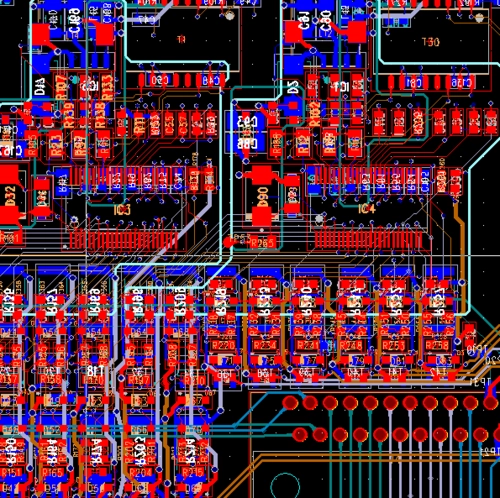
pcb factory: three classifications of standard resistors
The circuit board manufacturer and the circuit board designer explain the three classifications of standard resistors
The internationally recognized standard resistance is made of metal, which complies with Ohm's law. At a given temperature, when the voltage V is applied at both ends, the current value I must be determined. The ratio of V to I is a constant value, which is R=V/I. Please note that the standard resistors are all metal wires and the current wires are parallel to each other. They must be perpendicular to the terminal plane. The most important indicator of standard resistance is aging, or stability. Since the standard resistance is the standard, its resistance value should rarely change with time. Otherwise, we will go to calibration today and change a lot tomorrow. How can we make a standard? The main classification basis of standard resistance will be introduced in detail below.

1. From the material point of view, there are two kinds of manganese copper (Manganin) and Evanohm
Manganin has the advantages of small aging, small thermal electromotive force with copper, easy processing and welding. It is a widely used resistance material, but it has the weakness of high temperature coefficient.
Evanohm is a resistance material in the later stage, which has the advantages of high hardness, corrosion resistance, high resistivity, low aging, low temperature coefficient, etc. Its disadvantages are that it is not easy to process and weld, and its cost is high. This is widely used in modern standard resistors. Fluke's precision wire wound resistance is widely made of Evanohm material, with low temperature coefficient (- 1ppm for the above one). The removed wire is very hard and can be straightened by itself.
2. From the use method, it can be divided into oil type and air type
The former is mostly sealed, double wall structure, which needs to be immersed in a constant temperature oil bath filled with mineral oil for constant temperature, soaking and heat dissipation. The heat capacity of oil is relatively large, and the heat of resistance in use is easily absorbed without significant temperature rise. In addition, the oil is flowing, which can quickly take away the heat. The early standard resistance is made of manganese copper, and the temperature coefficient is relatively large. This way must be used to control the temperature to the allowable range.
The other is air. The oil type is not easy to carry and use. In the later period, due to the emergence of low temperature coefficient resistance materials such as Evanohm, there are very low temperature coefficient resistors, such as SR104 and Fluke 742A. In this way, the temperature has little impact on the resistance, so oil immersion is not needed, and it is very convenient to use.
On the other hand, the temperature coefficient of such resistance is known( α and β), Therefore, as long as the temperature around the resistance is tested, the corrected value can be obtained accurately through calculation or table lookup, and the corrected value is also very small and the weight is also small, which can completely eliminate or correct the impact on the resistance caused by temperature changes. Some air resistors are small in size, but their performance is also average.
3. In terms of structure, it can be divided into double wall sealing type, oil tank sealing type, ordinary sealing type and non sealing type.
Double wall sealed type, common in BZ3 and Thomas resistors, is the earliest and most classic standard resistor. The oil tank sealing type, such as SR104, is welded in a stainless steel tank with oil filled inside after the wire wound resistance is completed. For ordinary sealing type, such as Fluke 742A, there are four Fluke gold sealing wires in parallel wound with resistors. Non sealed type, such as domestic BZ3 small resistance. Since the resistance value is small, the resistance body is thick, and the external interference is small, it is unnecessary to seal. Domestic BZ3 0.01 Euro non sealed standard resistor. Remove the copper cup that can hold oil.
According to the above description, the standard resistance is generally expressed in ppm (one millionth) per year due to its small aging. For example, the annual aging of a 10k resistance of - 8ppm is 80 milliohms less per year. The aging rule of resistance is generally that the aging is the largest in the first year of production, and then slows down, and gradually tends to linear aging. Good standard resistance, aging can be better than 1ppm per year. The better resistance can even be within 0.1ppm per year, and it is regular. In this way, after one calibration, high accuracy can be maintained for many years.
The circuit board manufacturer and circuit board design manufacturer will explain the three classifications of standard resistors.







